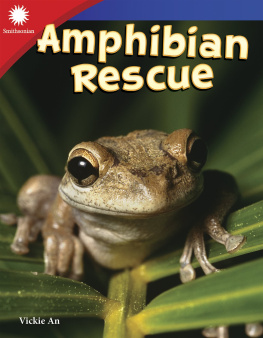Kristina Mercedes Urquhart - Botanical Illustration
Here you can read online Kristina Mercedes Urquhart - Botanical Illustration full text of the book (entire story) in english for free. Download pdf and epub, get meaning, cover and reviews about this ebook. year: 2018, publisher: Teacher Created Materials, genre: Romance novel. Description of the work, (preface) as well as reviews are available. Best literature library LitArk.com created for fans of good reading and offers a wide selection of genres:
Romance novel
Science fiction
Adventure
Detective
Science
History
Home and family
Prose
Art
Politics
Computer
Non-fiction
Religion
Business
Children
Humor
Choose a favorite category and find really read worthwhile books. Enjoy immersion in the world of imagination, feel the emotions of the characters or learn something new for yourself, make an fascinating discovery.
- Book:Botanical Illustration
- Author:
- Publisher:Teacher Created Materials
- Genre:
- Year:2018
- Rating:3 / 5
- Favourites:Add to favourites
- Your mark:
- 60
- 1
- 2
- 3
- 4
- 5
Botanical Illustration: summary, description and annotation
We offer to read an annotation, description, summary or preface (depends on what the author of the book "Botanical Illustration" wrote himself). If you haven't found the necessary information about the book — write in the comments, we will try to find it.
Botanical Illustration — read online for free the complete book (whole text) full work
Below is the text of the book, divided by pages. System saving the place of the last page read, allows you to conveniently read the book "Botanical Illustration" online for free, without having to search again every time where you left off. Put a bookmark, and you can go to the page where you finished reading at any time.
Font size:
Interval:
Bookmark:
0covercover.xhtmlcover1page0001page0001.xhtml22page0002page0002.xhtmlBotanical Illustration33page0003page0003.xhtml44page0004page0004.xhtmlTable of Contents Bringing Nature to Life 4 Drawing on the Past 8 Make Your Mark 14 The Right Stuff 20 The Need for Botanical Illustrators 26 STEAM Challenge 28 Glossary 30 Index 31 Career Advice 3255page0005page0005.xhtmlBringing Nature to Life Have you ever drawn a plant that you saw in real life? Did you make sure that you included every leaf, stem, and flower that you saw? Was your work accurate down to the smallest detail? Then a job as a botanical illustrator might be a good fit for you. These artists have a big job to do. They draw pictures of plants with lots of details. The plants almost come to life on the pages. Botany is the field of science that studies plants. It is a huge field of study. There are a lot of plants in the world! An illustrator is someone whose job is to draw. Botanical illustrators draw plants for their jobs. These drawings are used in different ways. Some people use them to teach about plants around the world. Others put them on display in museum exhibits. A woman observes botanical art in a museum.66page0006page0006.xhtmlA woman draws flowers in a garden. Botanical illustrations are very detailed.77page0007page0007.xhtmlBotanical illustrations can be drawn in black and white. They can also be drawn in color. It all depends on what style the artist chooses. Black and white drawings show more detail. Color helps the art come to life. Artists decide what is best for each drawing. Many drawings are on plain white backgrounds. They include scale measurements of the plants. Scale is the size of something compared to something else. Parts of the plants may be drawn close-up to show more of the plants' parts. Other drawings have backgrounds. They show what plants look like in their natural landscapes. All the drawings show parts of plants, such as the roots, stems, leaves, buds, flowers, and fruit. The drawings are used to help scientists learn more about plants. Artists choose whether to use color or leave art in black and white.88page0008page0008.xhtmlBig libraries called archives (AHR-kyvz) store botanical illustrations. That way, they are easier to find.99page0009page0009.xhtmlDrawing on the Past People have drawn plants for thousands of years. All over the world, people made records of plants by drawing them. There were no computers or cameras long ago. Drawing was the only way to remember important plants. Before there was bottled medicine, people used plants to heal their bodies. People put plants on bug bites, cuts, and bruises. People dried plants, too. They were made into teas. The teas were used as medicine. People were able to stay healthy by drinking teas made from these special plants. Plants used in this way are medicinal (meh-DIH-sih-nuhl). That means they help heal people who are hurt or sick. They were very important. They were the first plants that botanists recorded. People use plants to make medicine.1010page0010page0010.xhtmlTwo men illustrate plants in the 1500s. Mint is an herb used by people to make stomach pain go away. It tastes great, too!1111page0011page0011.xhtmlThe oldest botanical drawings are over 4, 000 years old. That is really old! They were found in ancient (AYN-chihnt) Egyptian tombs and temples. The Greeks and Romans drew plants, too. They painted plants on pottery and coins. Plant drawings were put in books called herbals (UHR-buhlz). These books were about plants that heal. Herbals made it easier to find special plants when they were needed. Age of Discovery Explorers traveled the world to see what they could find. They made drawings of the plants they found. They wanted to have records of these new species. They took seeds and living plants home with them, too. In the 1700s, explorers found many new plants. There was a rush to draw all the new plants. The world needed botanical illustrators. Explorers collected plants on trips and later recorded them in books.1212page0012page0012.xhtmlEngineering Going Back in Time Some botanical illustrators draw plants that are now extinct. That means they do not exist anymore. Artists work with fossils to make drawings of what these plants looked like when they were alive. Some fossils are not complete. Others do not show many of the plant's details. To draw from fossils, artists have to combine what they already know about plants with what they see. Alexander von Humboldt was an explorer who collected and recorded many plants.1313page0013page0013.xhtmlDrawing Styles There are two styles of botanical illustration. The first is called the Linnaean (lih-NAY-uhn) style. It is named after the man who created it : Carl Linnaeus. As a young boy, he loved plants. He had his own garden by the time he was five years old. Linnaeus could name almost every plant he saw. He grew up to be a teacher and botanist. In this style of drawing, plants have a lot of detail. They have beautiful colors. The background is white. The important parts of the plant are large so that they are easy to see. Linnaean style art Carl Linnaeus At the time of his death, Linnaeus was one of the most famous scientists in Europe.1414page0014page0014.xhtmlIn 1739, William Bartram was born. He loved nature and grew up to be a botanist and an artist. He was a poet, too. Most importantly, he was a naturalist. He shared what he knew about nature by teaching others about it. Bartram created a new style of drawing plants. It is called the ecological (ee-kuh-LAW-jih-kuhl) style. This style looks at all of nature, not just the plants. Drawings include the animals and bugs that live with plants. ecological style art William Bartram1515page0015page0015.xhtmlMake Your Mark Today, botanical illustrators are hired to draw plants for scientists. Botanists spend a lot of time studying plants. Drawings help them show what they've learned. The most important part of an illustrator's job is to make their drawings accurate. That means they should look just like the plants do in real life. Every detail must be right. Drawings must show the parts of the plants that help make new plants. They must show special parts that make the plants stand out from others that are similar. They also must show the way plants grow and change over time. Some plants grow tall and strong. Others stay low to the ground and make a clump. This is the plant's habit. Even though each plant grows a little differently, all plants of the same kind have the same habit. Botanical illustrator Alice Tangerini works on an illustration.1616page0016page0016.xhtmlbotanical illustration of marsh willowherb photo of marsh willowherb One plant illustration can take almost 50 hours to draw!1717page0017page0017.xhtmlBotanical artists work together with the scientists who hire them. The scientist's job is to write the text that describes the plant. The artist's job is to make a drawing that will give that text more meaning. Both jobs are equal. First, scientists and artists try to identify the plant by looking at it. If they can't identify the plant, they look at other plants that are similar. This helps them know what parts the plant has and what details need to be pointed out. Then, they classify the plant. Scientists have special categories for each type of plant. Artists use the text to help them draw the plant. If the plant does not have a name, scientists name the plant.
Font size:
Interval:
Bookmark:
Similar books «Botanical Illustration»
Look at similar books to Botanical Illustration. We have selected literature similar in name and meaning in the hope of providing readers with more options to find new, interesting, not yet read works.
Discussion, reviews of the book Botanical Illustration and just readers' own opinions. Leave your comments, write what you think about the work, its meaning or the main characters. Specify what exactly you liked and what you didn't like, and why you think so.














